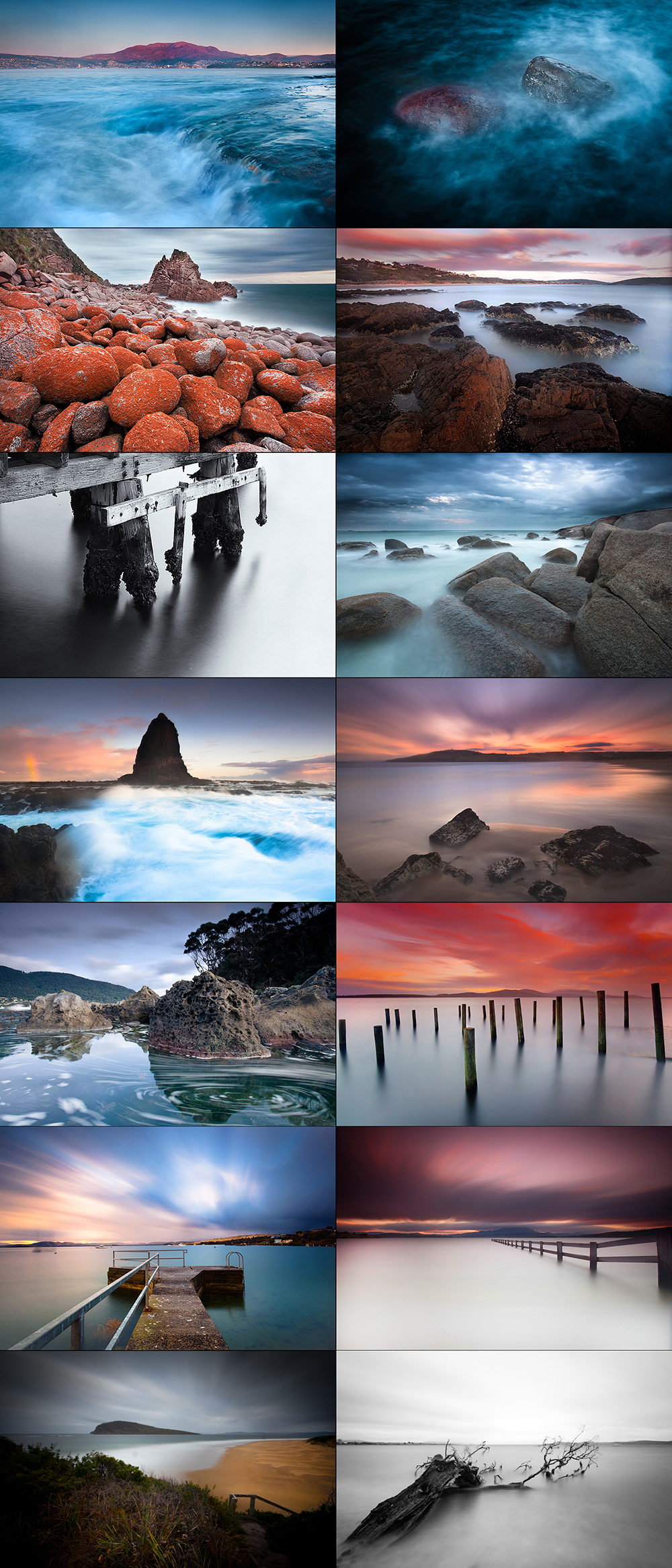
For a while now I’ve been putting together small articles about long exposure photography with a how to on waterfall photography and another on daytime long exposures. It’s one thing to learn technique but what good is it if you’re struggling for ideas on what to take photos of? This guide should help you with some ideas for long exposure photography. Some styles touched on include:
- Traffic and night long exposure photography – Using traffic to your advantage with the best angles and time to take this style of photography
- Waterfall long exposure photography – What to look out for when taking waterfall photographs. Little secrets to make yours stand out from the rest
- Star trail long exposure photography – Capture spirals of stars in the sky with these tips that will help your star trail photography
- Sea long exposure photography – Takes a look at what things I look out for when taking seascape photographs and how to combine these various elements to create a great photograph
- Bonus ideas that don’t fall into the above – Did you know you can use a long exposure to make a busy location like a busy pedestrian crossing appear a ghost town? This and other neat ideas are included in this section
This list of photo ideas isn’t a definitive list and only touches the surface of what’s possible through long exposures. I love that long exposures offer photographers the ability to transform a scene to how we normally view it. People are always pushing the envelope and finding ways to use long exposures like this beautiful series from Jakob Wagner entitled Urban Zoom that captures long exposures of cities. During the exposure he zooms the camera to create beautiful streaks. Although not necessarily new, it’s been executed perfectly and a neat little trick that shows the possibilities of long exposure photography. Don’t forget to check out another post that includes a free neutral density chart that’s a must for any photographers bag.
What You Will Need
Rather than go into great detail of the various equipment you will need for long exposures, I’ll try keep this short and a rough guide on what equipment I recommend. It is by no means the only equipment you can use (other brands are more than fine) it’s just based on the brands I personally use. A few things that I would personally recommend include:
-
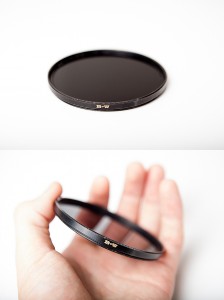
A good neutral density filter like the B+W 110 neutral density filter helps a lot for long exposure photography Canon 5D Mark III – This thing is a work horse, handling noise perfectly and compliments the 17-40 nicely with its weather sealing
- Canon 17-40 – An ultra wide angle lens suits long exposure photography perfectly especially with its weather sealing
- Manfrotto tripod – Essential to having your camera remain still and avoid any shake during the long exposure
- B+W 110 neutral density filter – A strong neutral density filter is great to have in your kit as this will allow you to take long exposures (2-5 minutes) during the day
- Intervalometer – These remote controls are great as they allow you to manually dial in the exposure time you want, program it to take an exposure every X seconds (great for timelapse) and are generally just great for long exposure photography. There’s cheaper Asian brands on the market which I’d also recommend searching for if you’re on a budget
As I mentioned this is by no means the essential equipment for long exposure. Use whatever is available to you financially. I’ve seen people take some great stuff even with an iPhone so it goes to show that you don’t necessarily always need great gear but it does help 😉
Traffic and Night Long Exposures
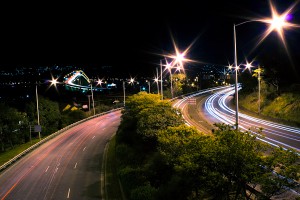
Long exposure night photography is where my photography all started with this photo taken looking towards the Tasman Bridge in Tasmania. It’s what started it all for me and gave me the long exposure bug.
Some ideas and tips for capturing long exposures of traffic:
- Look for a high vantage point that will allow you to look down on the passing traffic (see the first photo below as an example)
- Timing is key. Try to base your timing around peak hour traffic to get a consistent flow of traffic at all times. There’s nothing worse than standing around in the dark waiting for cars to come by. Instead if you’re shooting at peak hour you’ll never have any issues with waiting for cars to come through
-
If you can’t get a high vantage point, try get close to the action. Sometimes I find setting the tripod on the corner of a busy intersection and zooming in a little will create a sense that your camera is only centimeters away from the action
- Experiment with varying exposures from long exposures so the traffic creates red and white lines to shorter exposures where you can almost make out the detail of the passing cars. Melbourne is quite iconic for its yellow taxi’s and trams. In the two images in the bottom left hand corner below I wanted to capture the movement of these in a long exposure but to avoid blurring them out completely I opted for a shorter long exposure
- Aim to take your traffic long exposure photographs around sunset, sunrise or blue hour. Your aim is to photograph the tail or front lights of passing cars and it’s only obvious that this will be more around time when light is limited and cars will need their lights on. The bonus of this is that your camera will be able to obtain a long exposure without the need for neutral density filters and you will get some beautiful colour in the sky. My first traffic long exposure photo taken above was taken late at night so the sky is lost and a dull black. If i was to of shot this on sunset or blue hour I would of had a lovely sky against the traffic streaks. It’s little things like this that can make a photo
- When scouting locations suitable for long exposures of passing traffic I’ll try to base it around major entry/exit points of a city. For the top two photographs below, both are major entry and exit points to Melbourne. It was important that I timed the photos for peak hour to ensure there was a steady flow of traffic to capture
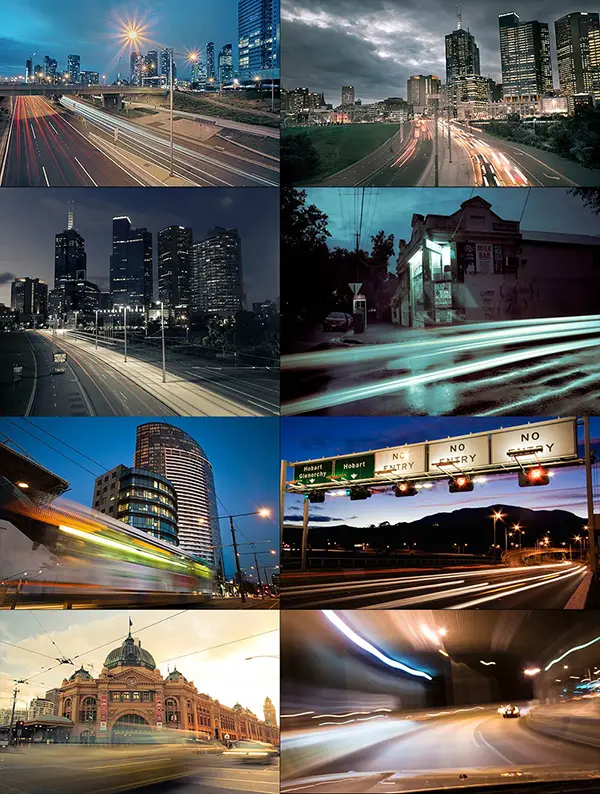
Waterfall Long Exposures
A while ago I put together an article that touches on what settings to use for waterfall photography. The article looks at how to shoot long exposures in daylight for waterfalls, demonstrates the effect shutter speed can have for waterfall photography and other little tips. That aside let’s look at some ideas for waterfall long exposure photography:
- It doesn’t have to be just about big waterfalls. Sometimes streams that come further down from the main waterfall can create great composition points for you photo. Take the second photo on the top row for example, the main waterfall is a lot further up stream but the two rocks created a nice composition point for my photo
- Look for little swirls of foam or water coming off the waterfall or further down stream. When shooting waterfalls I’ll try to keep an eye out for little pockets of water doing interesting things. Try to study them for a few seconds and imagine how they will look if you were to use a 3-5 second long exposure. To give you an idea what I mean, check out the bottom two photos on the third row where little lines of spray were flowing down off the waterfall and created an interesting effect in the long exposure. This adds a nice touch to your composition and makes it stand out a bit more from the rest
- Get side on to the waterfall. Most people will generally shoot a waterfall looking directly front on. Why not try something different and go to the side? Just be warned though your lens will quickly accumulate spray from the waterfall if you’re not careful. It’s a matter of quickly planting the tripod, looking through and lining things up, firing the shot and moving the camera out of the spray. Rinse and repeat until you get a shot you’re happy with
- Long exposures are great but make sure it’s not too long. Photographing long exposures of waterfalls looks great with its blurred water but be mindful that over-doing the exposure time can introduce blur to other parts of the image where you may not want it. One example of this is the blur a long exposure can introduce to the foliage area of a photo. Instead of the foliage appearing sharp and crisp, it instead looks blurry and dull. Try to be mindful that 5 second and onward exposures is where this starts to become an issue
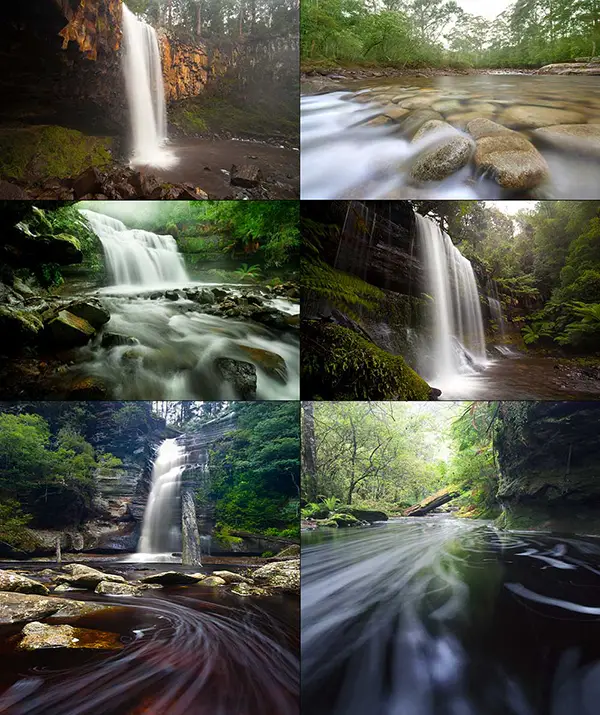
Star Trail Long Exposures
Admittedly star trail photography is something I’m still very much learning about but here’s some things that I’ve learnt from my experience of standing out in the cold for hours on end.
- Get out of the city and head out for a drive somewhere that’s not near surrounding housing or industry. This will allow you to get a better view of the stars due to less ambient light from houses and industry.
- Star trails are best photographed on a moonless evening or when the moon is not above the horizon. When the moon is at it’s peak, it creates too much light in the sky and lightens the stars.
- Use a torch to focus on your composition element. For the shot below I shined a torch on the tree below, focused and then turned the camera into manual focus. Don’t fall victim to my common mistake of leaving the camera in auto focus and have the camera try to find focus again after I’ve preset the exposure. Alternatively you can set the camera into manual focus and set the focus to infinity. This technique works best with an ultra wide angle lens
- Capture the stars spiraling in the sky as the earth naturally rotates. An example of this is the shot below which is achieved by using a long exposure (30 minutes) facing the northern direction (assuming you’re in the northern hemisphere) that captured the stars moving and appearing as concentric rings. What’s that you ask? To break it down a little… As you set up the camera on the tripod facing northerly (pretending you’re in the northern hemisphere here for a moment) and you fire your long exposure, the camera captures the stars spiraling in a circle due to the earth rotating on a north-south axis. It’s a little confusing and I must confess something I’m still very much learning but don’t be put off. It’s not as daunting as it sounds
- Bring a long a torch or head light for some light painting. Being out of the city and in a dark environment it might be hard to see composition so why not use your head torch to light up your composition midway through the exposure. I used this technique on the trees in the shot below to brighten them during the exposure
Seascape Long Exposures
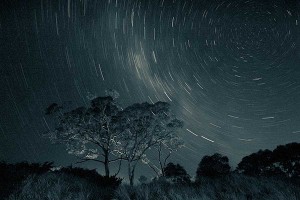
Seascapes offer so much potential for photographers looking to capture long exposures as there’s so many changing elements which come alive with a long exposure. One of my first articles when starting this blog was about daytime long exposures. I love being by the sea and one of my favourite long exposure photos I’ve taken is this photo at Howden where the long exposure created a lovely blur on the clouds and captured the reflections perfectly. Some of my favourite ideas and tips for seascape long exposure photography include:
- Depending on the location, clifftops make a great vantage point for long exposure photographs especially if there’s a wild sea with waves constantly crashing.
- Not much water movement? Look up and take in the sky. Sometimes I’ll arrive at a scene and there won’t be much water movement but the clouds are a mix of overcast and fine which create a nice patchy cloud coverage. I find this type of coverage great as when there’s a bit of breeze about (which there normally is if shooting by the sea) they create a blur to add an extra element to your composition. Check out the two photos on the second row to give you an idea of what I mean. Both scenes had limited water movement but lots of patchy cloud to balance out the shot in the long exposure
- Keep an eye out for things with that have aged over time. Some of my favourites include old jetties that are still in use and even better, ruins from jetties and other things that poke out of the water. They create a great composition element through the rough textures and leading lines they can sometimes create. Generally I’ll scout around coastal towns or areas popular for fishing as there’s bound to be some old jetties or boat launch ramps that were once used for fishing. Unfortunately these seem to be slowly getting pulled down over time so get in while you can
- Lookouts make a great vantage point for your composition. Tourist lookouts offer a great view of a location making them a great spot to setup your camera for a long exposure. Try to be courteous of tourists and others coming to admire the view by not getting in other people’s way too much or setup elevated out of the way
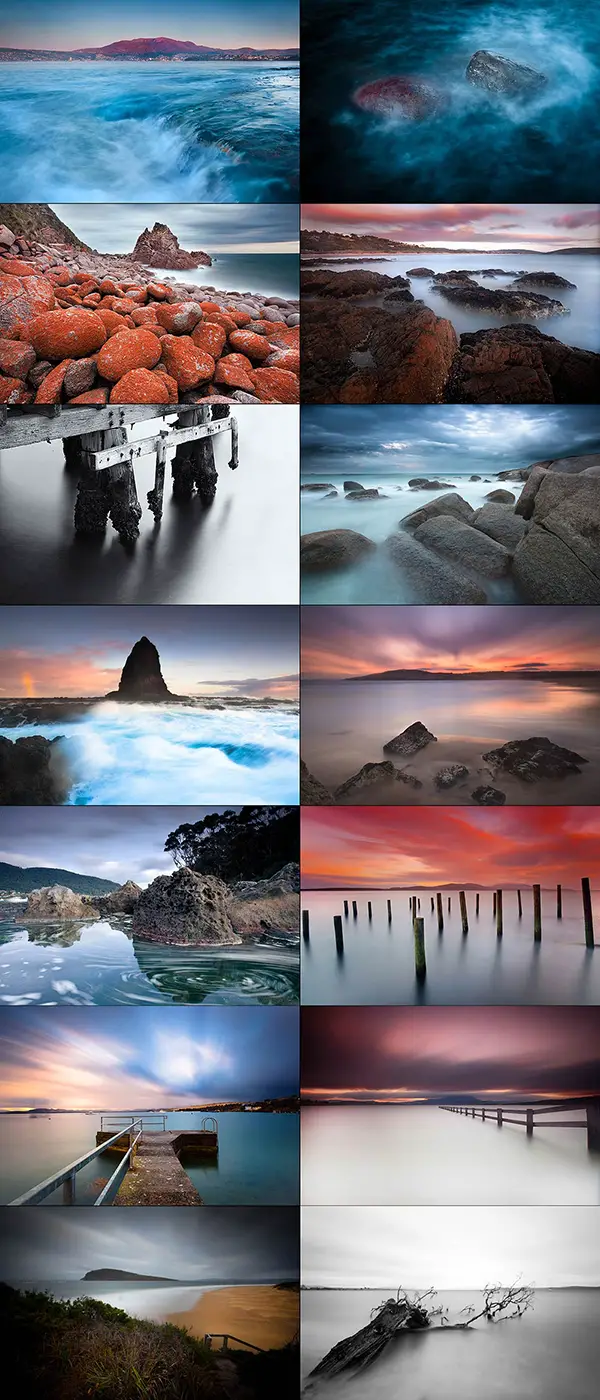
Finding Beauty in the Unexpected
One thing I love about long exposure photography is that the possibilities are endless. We could go on all day about long exposure photography ideas but here’s a couple more of my favourite ideas not listed above:
- Patchy skies create a great composition element. Wandering around Hobart a few years ago I snapped the second photo on the top row below. It’s not a great shot by any means but the clouds blurred from a long exposure against the old architecture of Hobart add a diffferent touch to your average photo
- Dial your camera into a long exposure and stick your camera out the window to capture a sense of speed
- Grab some sparklers or a torch and run around in front of the camera for some long exposure night photography. This style of light painting works best by grabbing a torch and placing some coloured cellophane or even coloured cd cases over the front of the torch. It’s a neat little trick but has nothing on the beautiful work of Denis Smith with his Ball of Light project. A must for anyone looking for light painting inspiration
- Use a long exposure to exaggerate fog of a scene. I hate to admit this but the forth row photo beneath a bridge on a foggy morning there actually wasn’t that much fog as the photo leads you to believe. By using a long exposure I was able to capture the fog as it moved down the river which exaggerated the fog in the photo. Although be mindful that using a long exposure during foggy conditions can fog up your camera lens if you’re not careful. Try to check your lens often throughout the shoot to ensure you don’t get home with a card full of unusable images
- Remove people from a busy scene with a long exposure. Living in a busy city (Melbourne, Australia) I’ll arrive at a scene to take sunset photos (like this one at St Kilda Pier) and it will be crowded with tourists. Rather than take a photo with people cluttered all through my photo I’ll set the camera up for a long exposure. It works perfectly and I’m able to take a photo of a scene with no people getting in my shot. Just be mindful that you need quite a long exposure for this effect to work well and also for people not to stand and stop too long in your frame. This post-apocalyptic photo series by Lucie & Simon captures major cities appear as ghost towns by using this effect
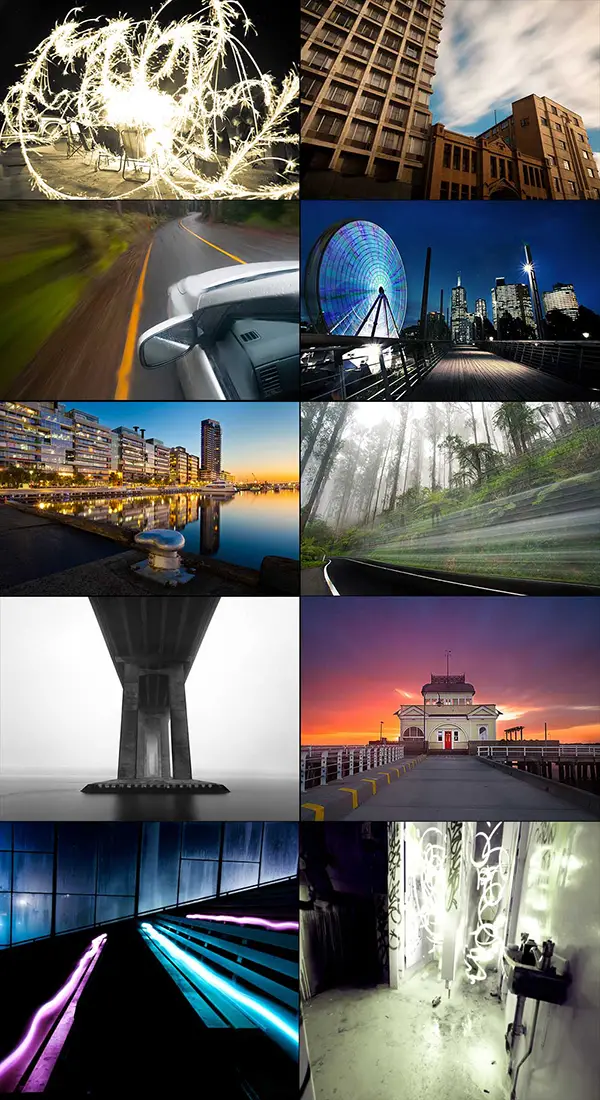
What’s your Favourite Long Exposure Subject?
As I said in the introduction to this post that the possibilities of taking long exposure photographs are endless. What do you enjoy taking photos of using long exposure that I’ve missed?
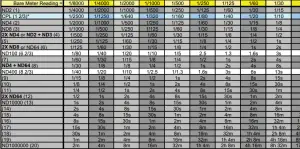
If you found this article useful I’d be super grateful if you shared it via your favourite social networks to others who might be also interested in the topic. Feel free to follow me on Facebook, Twitter or Google+ for future posts like this. You might also be interested in a previous post called the magic cloth technique that is a very effective and easy DIY neutral density filter trick.
Have any questions or comments about the article? Feel free to drop an email as I’m always happy to help 🙂
If you enjoyed this article, be sure to give my recent article on what equipment is recommended for landscape photography a read.
Thanks for reading and i hope these long exposure photography ideas have been of help!
– Alex
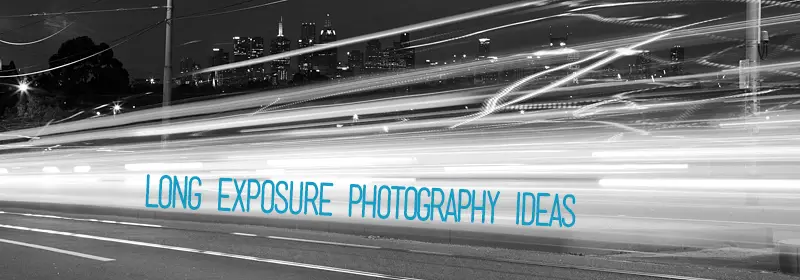

[…] http://www.alexwisephotography.net/blog/2013/06/02/long-exposure-photography-ideas/ […]
Nicely put together Alex 🙂
Thanks Jack! 🙂
Those are some great shots! I’ve always liked the way that long exposures of water appears as fog, which is especially noticeable when rocks are in the frame as they are in a number of your photos.
Thanks Dave! It’s funny you mention that as I’ve had a few people actually ask whether it was fog and pleasantly surprised when I explained how a long exposure works and that it was water. Thanks for stopping by.
– Alex
Great detail here, Alex, what a terrific article you’ve written. I really enjoyed the photos you’ve included to illustrate your points, they really add a great dimension to your post!
Thanks for all your continual support Scott, it’s much appreciated! I owe you a beer if you’re ever in Melbourne town 🙂
Nice article, Alex! I love shooting with long exposures. I even created an iPhone application for calculating long exposures with ND filters, ND Grad filters, star trails and much more. Today I’ve released version 2.1: http://www.genkin.org/apps/long-exposure-calculators/
Hope that helps you shooting with long exposures.
Excellent app Ilya! Would love to see this on Android one today.
Thanks for stopping by and sharing.
– Alex
Incredible photography, truly inspiring!
Thanks for stopping by Sean! 🙂
What no steel wool?
https://www.facebook.com/photo.php?fbid=426217977486367&set=a.426217904153041.1073741838.254024394705727&type=3&theater
How could I forget! Thanks for reminding me Spencer that not only that I haven’t included this but never actually got around to doing it myself! Love your photo and the others in your ‘sparks’ series.
– Alex
[…] Long Exposure Photography Ideas – Alex Wise writes a detailed post here outlining some terrific ideas for how to apply long exposure photography for amazing results. Alex’s in-depth piece is illustrated with great photography examples showcasing the core techniques and concepts being discussed in the article. […]
hi alex!
im in year 11 and was given an assignment in photography to chose a photographer who we admire and use them as inspiration by using simliar styles and techniques that you use. I loved all of your long exposure photos and would like to thank you for the information you have about them as it made it super easy for me to complete my assignment!
thanks a lot
alexandra petkov gration
Hey Alexandra,
Wow! Thanks so much for the kind words and choosing me as your inspiration. That means a lot. if you have any questions about long exposure feel free to shoot me an email and I’ll do my best to help.
Thanks and good luck with your assignment,
– Alex
I’ve been taking photos on a smartphone for a year now and am beginning to get more serious in what I’m taking (as in branching out) and am quickly realizing I need a real camera. I should be purchasing one soon and one of the things I can’t wait to do on it would be long exposure photos. there are apps for slow shutter speed but smart phones can’t handle lights the right way. I appreciate your equipment suggestions cuz I will definitely be checking those out!
Thanks Parker! My friend who also has an iPhone uses avgcampro with a tripod for his mobile phone gets some pretty great results. I’d also recommend Slow shutter app. Unfortunately (for me especially as I’m a user) there’s not much in the way of long exposure apps for Android at this stage but I feel like this will change with Android 5.0 and all the new camera functionality that is going to be made available.
Hey Alex, love the photos! I was wondering where and the date of which you took the long exposure shots of the city and the waterfalls. I’m asking as I’m using you as my influence for my schoolwork, cheers.
Hi Jamie, these were taken over the 2011-2013 period all mostly around Melbourne, Australia. Thanks kindly for stopping by! 🙂